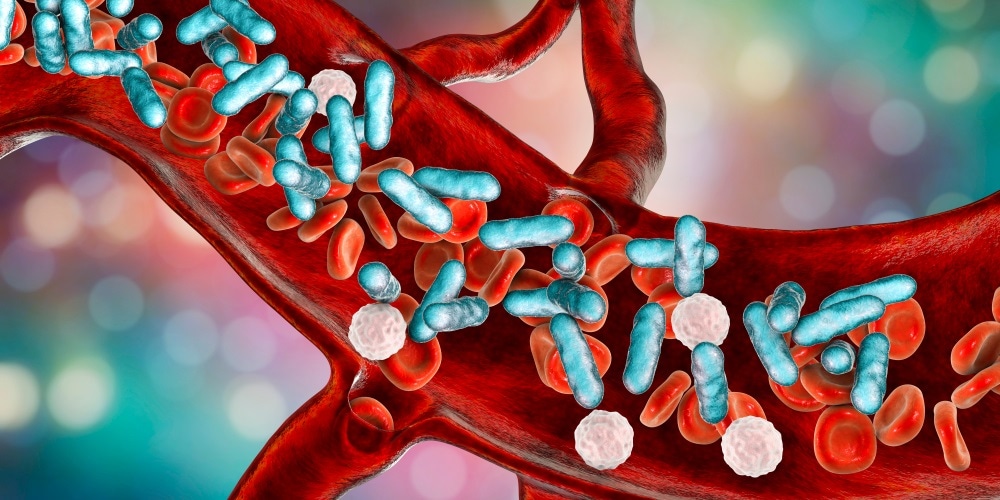Sepsis is a potentially life-threatening condition that stems from the body's immune response against an infection. If there is an acute infection in the body, the immune system releases chemicals to fight the pathogen. However, when it goes out of balance, sepsis occurs and can lead to multiple organ failure. Now, scientists have found a novel approach using nanotechnology that can fight late-stage sepsis.
 Image Credit: Kateryna Kon / Shutterstock.com
Image Credit: Kateryna Kon / Shutterstock.com
A team of researchers at Ohio State University has discovered a new way to boost the cells' antibacterial properties. The novel method can prop up the immune system's ability to fight against sepsis, a condition usually caused by serious infections by bacteria.
Across the globe, an estimated 30 million people develop sepsis each year and remain as the leading cause of death in hospitals and health care facilities. In the United States, about 1.7 million people develop sepsis annually.
Sepsis is not an infection but the immune system's fatal response to an invading pathogen. The condition often causes tissue damage and, eventually, organ failure and death.
Over the years, antibacterial resistance has led to an increase in sepsis prevalence worldwide. It has posed an additional challenge for doctors that treat sepsis. Now, many scientists study alternative ways to treat sepsis.
Using nanotechnology
In the study published in Nature Nanotechnology, the researchers used nanotechnology to transform donated healthy immune cells into a drug formulation with greater and more potent power to kill bacteria. The study involved two technologies in finding a treatment for sepsis – using vitamins in formulating lipid nanoparticles and taking advantage of natural cell processes in making a new antibacterial medicine.
In a normal immune response, macrophages are the first line of defense. They are the first ones in the site of infection that work by engulfing or eating the pathogens or disease-causing microorganisms. Patients who suffer from sepsis may have a lower number of macrophages; hence, they don't function properly. The scientists hypothesized that if patients received healthy immune cells, they could help boost the immune system's power.
The team developed vitamin-based nanoparticles in the laboratory from collected monocytes, white blood cells that can later turn to other immune cells, from the bone marrow of healthy laboratory mice. They then cultured them and turned them into healthy and well-functioning macrophages.
The nanoparticles are designed to deliver messenger RNA, which are molecules that can translate genetic information into useful proteins. In the study, the team made a messenger RNA by encoding a single protein and an antimicrobial peptide. The molecules worked together to access and accumulate in lysosomes, which is a vital location for bacteria-killing processes.
After, the scientists transported the nanoparticles containing the developed messenger RNA into the macrophages they created. The idea was that the cells would then take over and create a new therapy to kill the pathogens. Eventually, this should restore the immune system's normal activities.
"Macrophages have antibacterial activity naturally. So, if we add the additional antibacterial peptide into the cell, those antibacterial peptides can further enhance the antibacterial activity and help the whole macrophage clear bacteria," Yizhou Dong, associate professor of pharmaceutics and pharmacology at The Ohio State University and study co-author, said.
Promising results
After testing in cells, the scientists observed promising results. Hence, they continued on an administered the new cell therapy to immunosuppressed laboratory mice with sepsis that was infected with a multi-drug resistant Escherichia coli and Staphylococcus aureus.
The mice were divided into experimental and control groups. The control group was given a placebo and ordinary macrophages, while the treatment group received approximately 4 million engineered macrophages. The treatment group had a marked decrease in bacteria in the blood after 24 hours of receiving the treatment. In mice with bacteria remaining in the blood, the second treatment killed them immediately.
"Our results demonstrate that adoptive MAC transfer leads to the elimination of multidrug-resistant bacteria, including Staphylococcus aureus and Escherichia coli, leading to the complete recovery of immunocompromised septic mice. Our work provides an alternative strategy for overcoming multidrug-resistant bacteria-induced sepsis and opens up possibilities for the development of nanoparticle-enabled cell therapy for infectious diseases," the researchers concluded in the study.
Journal reference:
Hou, X., Zhang, X., Zhao, W., Zeng, C., Deng, B., McComb, D., Du, S., Zhang, C., Li, Q., and Dong, Y. (2019). Vitamin lipid nanoparticles enable adoptive macrophage transfer for the treatment of multidrug-resistant bacterial sepsis. Nature Nanotechnology. DOI: https://doi.org/10.1038/s41565-019-0600-1